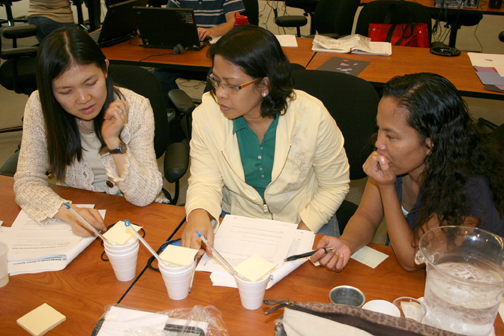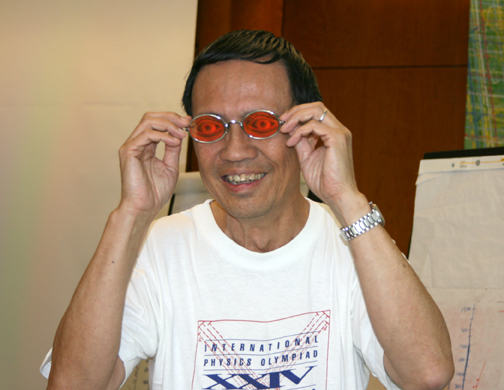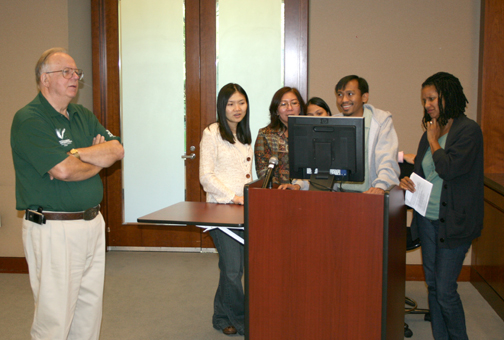2008 October Announcements
Announcements
October 2008
Energy and How To Teach It
 |
| Wei Huang, Ruby Agbuya and Roxan Banzon test thermal conductivity of polystyrene cups. |
 |
| Francis Tam tries “eyeball” glasses from a display of 3-D, diffraction and holographic products. |
Leading the workshop was Jim Nelson, a long-time teacher and former AAPT President. He is AAPT/PTRA’s Principal Investigator and Director. In addition to Nelson and Tam, the workshop teaching team included Eric Moore, Teaching Post-Doc at Frostburg, and Katya Denisova of the Homeland Security Academy in Baltimore. They were assisted by AAPT Programs Coordinator Janet Lane.
 |
| Jim Nelson (l) looks on as Wei Huang, Bel Ramos, Renevie Magboo, Reman Abadejos, and Judy Barber present data on energy efficiency of lightbulbs. |
“When will you know about 2009?”
“Will there be a workshop on wave motion?”
“What about electricity?”
The Electricity Summer Institute for 2009 is already funded, Tam said. A grant application for continuing support is in the works, and it includes funds for a proposed workshop on wave motion, optics and sound.
ITQ/TOPPS is part of a nation-wide PTRA program organized by AAPT. The organization’s mission is to improve physics teaching and learning. Its rural and urban programs offer leadership training and professional development opportunities for teachers.
The National Science Foundation has funded a series of AAPT/PTRA initiatives, of which the Frostburg project is a part. ITQ/TOPPS receives support through the federal Mathematics and Science Partnership (MSP) program in conjunction with the Maryland Higher Education Commission.
Over the past year PTRA has presented ten MSP workshops and seven summer institutes nationwide. The annual PTRA Leadership Institute and workshop took place in Edmonton, Alberta, Canada in connection with AAPT’s July Summer Meeting.
Learn more about PTRA at: http://www.aapt.org/PTRA/
Friday, November 21, 8:00 a.m.–4:30 p.m.
D135, Oregon Convention Center
AAPT offers a full day of physics content at each NSTA area conference. Physics Day consists of presentations on physics topics of current interest, physics demonstrations for the precollege classroom, and a make 'n' take session where participants can construct a piece of physics apparatus for use as a demonstration or as laboratory experiment. Physics Day in Portland is being organized by the Oregon Section of the American Association of Physics Teachers.
Visit http://www.nsta.org/conferences/2008por/specialprograms.aspx#physics for more information.

